What is an artificial satellite? How does an artificial satellite stay in orbit? What are the different types of satellite orbits? These are the things that you will find out by reading this blog post.
Satellites are objects or heavenly bodies that orbit a planet, star or an asteroid.
Satellites can be classified into natural satellites and man-made satellites. For example, moon is the natural satellite of earth. On the other hand, the International Space Station is a man-made satellite. In this article, the term ‘satellite’ refers to man-made satellites only.
Artificial satellites
Sputnik 1 (Russian word for satellite), the first man-made satellite, was launched by the Soviet Union in 1957. It orbited the earth once every 96 minutes. Since then, almost 80 countries have launched more than 8,900 satellites.
As of 2018 only 1,900 of these are still operational. 3,100 satellites have become nonoperational, but still remain in earth’s orbit as space debris. The rest are somewhere in the outer space.
What keeps a satellite in orbit?
As you know already, every object exerts a gravitational force on another object. The higher the mass of the object, the greater is its gravitational force. The gravitational force of the Sun keeps the planets in orbit. Similarly, the gravitational force of the earth keeps the moon and artificial satellites in orbit around the earth.
However, the gravitational force alone is not enough for an object to stay in orbit. There has to be an equal and opposite force acting on these satellites. Otherwise, they will fall on earth. This opposite force is the satellite’s momentum. It is the product of the satellite’s mass and the velocity with which it moves.
On the other hand, without gravity, these satellites will leave their orbit and travel in a straight line away from earth. So, at every point in time, the gravitational force of the earth acting on the satellite and the momentum of the satellite have to be balanced. Only then can the satellite stay in orbit.
Velocity of the Satellite and its distance from Earth
The formula for the gravitational force acting on the satellite is :
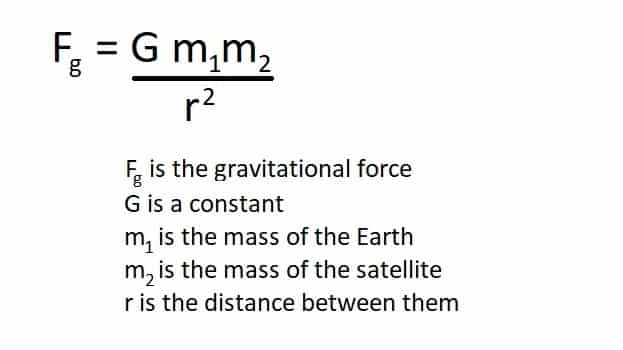
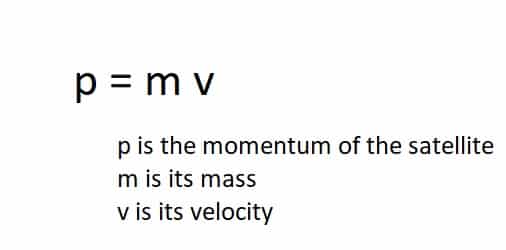
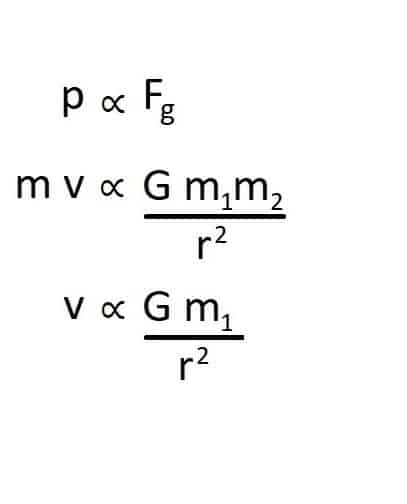
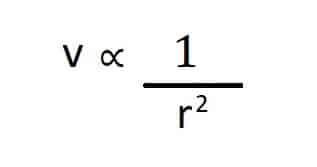
Types of Satellite Orbits
Satellites are launched into different orbits around the earth. The type of orbit a satellite takes depends on its mission. Depending on their distance from earth, satellites can be classified into the following types.
High Earth orbit
Satellites orbiting the earth at a height of 35,786 km from the surface of the earth are said to be in High earth orbit.
Satellites at this altitude are said to be in a ‘Sweet spot’ because, they are orbiting the earth with the same speed as the rotation of the earth. This means that, a satellite at this altitude looks like it is staying still. Such orbits are called Geosynchronous orbits and are used for telecommunications as well as remote-sensing applications.
If they orbit earth at any other latitude other than the Equator, they will have the same longitude. But they can move north or south (fixed longitude but changing latitude).
If a geosynchronous satellite orbits the earth directly above the Equator, it is said to be in Geostationary orbit because it appears to stay at a fixed location above earth with no change in longitude and latitude over time. This gives a constant view of the location throughout the year that makes it extremely useful for weather monitoring. The weather reports and satellite views of locations come from geostationary satellites.
Medium Earth orbit
Medium earth orbits are closer to earth than High earth orbit. There are 2 important medium earth orbits.
Semi-synchronous orbit
It is a near-circular orbit around the earth at a height of 20,200 km. Satellites in this orbit complete one orbit in 12 hours. The satellite passes over the same 2 spots on Equator everyday and another 2 spots on the Equator every night. All the GPS satellites are in this orbit.

Molniya orbit
While the semi-synchronous orbit is near-circular, this orbit is elliptical, with the earth near one edge. This helps in providing communications to high latitudes (like Canada), because these latitudes cannot be covered using Geostationary and Geosynchronous orbits.
Low earth orbit
A low earth orbit is a near-circular orbit around the earth at a height of 160 km – 2000 km with an orbital period of 128 minutes or less. The mean orbital velocity needed for a satellite to stay in this orbit is around 7.8 km/s. Most of the scientific, spy and weather satellites are in this orbit. The international space station orbits around the earth in the low earth orbit at an altitude of 400 km.
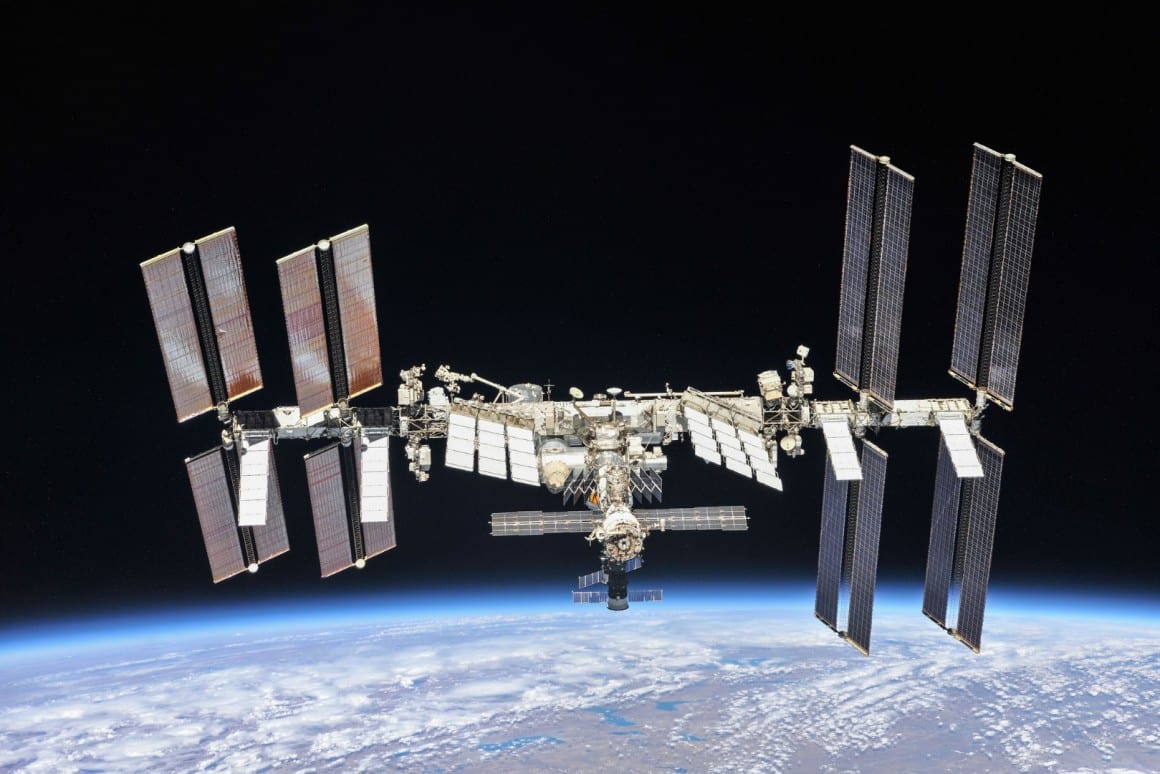
The amount of energy required to place a satellite in low earth orbit is very less compared to the other orbital regions. Therefore, most of the satellites are launched to orbit the earth in the low earth orbit. However, in the low earth orbit, the drag caused by the atmosphere damages the satellites (due to the frequent collisions between the gas molecules and the satellite) traveling at such high velocities. This process is called orbital decay. Hence, the satellites need to be re-boosted (to maintain altitude) periodically or replaced completely.
Most of the satellites in this altitude that lose functionality are made to reenter earth, where they usually burn up. Therefore, this part of the orbit is congested with space debris – around 8,500 objects larger than 10cm and a million objects bigger than 2mm.
Polar orbit
Satellites in the low earth orbit, which pass over the Earth from pole to pole are said to be in Polar orbit. Polar orbits are at an altitude of 200 km – 1000 km. Polar orbits are normally used for earth observation, weather and reconnaissance.
By the time a satellite in a polar orbit completes one orbit, the earth would have turned a little bit. So, the satellite will now be in an adjacent time zone when compared to its last orbit. A satellite in polar orbit completes one orbit in (mostly) 90 – 100 minutes. Hence, in one day, it will see most of the earth twice.
Sun synchronous orbit
Polar orbits that are synchronous to the Sun are called Sun synchronous orbits. These orbits are at an altitude of 200 km – 600km. In a Sun synchronous orbit, regardless of when and where the satellite crosses the Equator, the local solar time is always the same. That’s why it is called Sun synchronous.
For example, whenever and wherever the NASA’s Terra satellite crosses the Equator, the local time at that moment at that place is always 10:30 am. This is important for comparing images from different years to find changes in weather, etc.
Facts you probably didn’t know
- You can see the International space station from the ground. It is the third brightest object in the night sky. In this website from NASA, you can find how and when to spot the International Space Station from your location.
- The first living creature that was sent into orbit was a dog named Laika (Sputnik 2, 1957 by Soviet Union).
- A satellite has 2 main components : An antenna for sending and receiving information from earth and a power source (mostly a solar panel).
- In 2009 an American communication satellite and a Russian communication satellite collided in space.
- There is a satellite that has been programmed to reenter earth after 8.4 million years. It will deliver a message from us to the future civilizations.
- Satellites can be as big as a bus (6 tons) or can be as small as a 4-inch cube (1 kg).
- Satellites are programmed to avoid asteroids so that they don’t collide with them.
We hope this blog post helped you understand what the different types of satellite orbits are. Find out what you learned in this blog post. Take the quiz on the types of satellite orbits now.
If you liked reading this blog post on the different types of satellite orbits, you may like our following articles too.


Leave a Reply